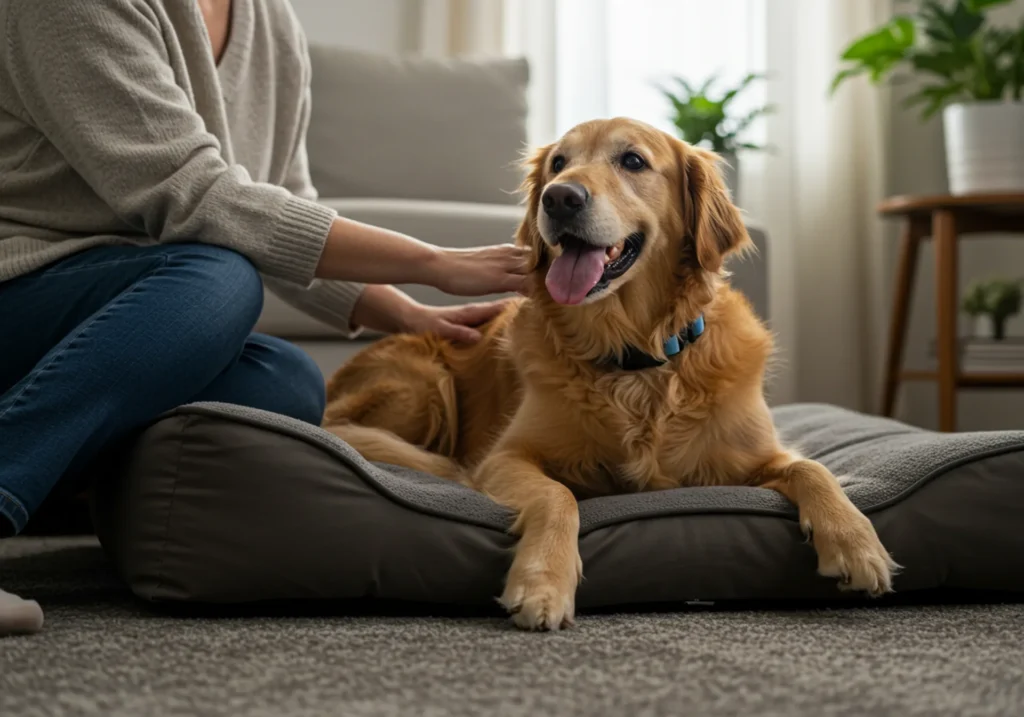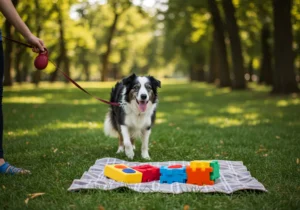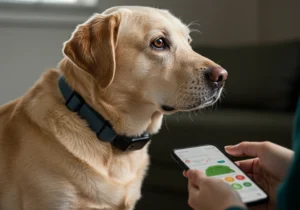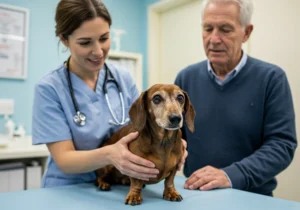As dogs enter their senior years, their needs change dramatically. Just like humans, they may face mobility challenges, cognitive decline, and health conditions that require extra attention. The good news is that senior dog care technology combined with preventive strategies can help your pup stay healthy, active, and comfortable well into their golden years.
Why Preventive Aging Care Matters for Senior Dogs
Preventive care is about addressing small changes before they turn into major health issues. Senior dogs benefit greatly from early detection of problems, regular vet checkups, and lifestyle adjustments that support their overall wellness. According to PetMD’s senior dog care guide, older dogs need more frequent health monitoring and a mix of physical and mental stimulation to thrive.
By focusing on prevention, owners can extend their dog’s active years and reduce costly emergency treatments. This is especially important when planning extended stays with a sitter. Being prepared ensures that your pup receives the right care, as explained in how to prepare your dog for a successful dog sitting experience.
Signs Your Dog Is Entering the Senior Stage
- Slower movement or stiffness after exercise
- Changes in appetite or digestion
- More frequent naps or fatigue
- Reduced hearing or vision
- Behavioral shifts such as anxiety or confusion
If you notice these changes, it’s time to consider both preventive strategies and new technology to support your pet’s comfort.
Technology That Supports Senior Dog Care
1. Smart Collars for Health Monitoring
Modern smart collars track your dog’s activity, sleep patterns, and even heart rate. These devices can alert owners and vets to subtle health changes. For example, if your dog becomes less active or restless at night, the collar may help pinpoint potential arthritis or discomfort.
2. Automatic Feeders and Water Fountains
Consistent hydration and nutrition are vital for senior dogs. Automated feeders ensure that older pets receive meals at the right time, while filtered water fountains encourage regular drinking, reducing the risk of kidney problems.
3. Orthopedic Beds and Home Comfort Gadgets
Memory foam or orthopedic beds reduce joint pain and improve rest. Add heated mats during colder months or cooling pads in the summer to keep your senior dog comfortable. Paired with automated gadgets like self-filling water bowls, these adjustments can make daily life much easier.
4. Telehealth and Vet Apps
Veterinary telehealth apps give you quick access to professional advice. This is especially helpful if your senior dog shows sudden changes while you’re traveling and relying on a sitter. You can coordinate with your sitter using safety tips such as those outlined in our pet sitting safety guide.
Preventive Health Strategies for Senior Dogs
1. Regular Vet Checkups
Senior dogs benefit from biannual wellness exams. Vets may run bloodwork, check joints, and examine dental health to catch early issues. Routine care supports longevity and minimizes discomfort.
2. Balanced Nutrition
Aging dogs often need diets lower in calories but higher in fiber and essential nutrients. Specialized senior formulas promote digestion, joint health, and cognitive function. Ask your vet which diet is best for your pup.
3. Gentle, Consistent Exercise
Senior dogs may slow down, but they still need regular activity. Gentle walks, swimming, or light play help maintain joint mobility and prevent obesity. If you’re planning to travel, ensure your sitter knows your dog’s exercise routine. For more guidance, see 5 tips for making your dog’s stay stress-free.
4. Mental Enrichment
Puzzle toys and training games keep senior dogs mentally sharp. Pairing enrichment with comfort ensures a well-rounded lifestyle that supports healthy aging.
The Role of Sitters in Senior Dog Care
Dog sitters play an essential role in managing preventive aging care. A knowledgeable sitter understands how to spot early signs of discomfort, maintain routines, and adapt activities to suit an older dog’s energy levels. This makes selecting the right sitter critical. For help, read how to choose the right dog sitter.
Owners should provide detailed care instructions, including feeding schedules, medication doses, and signs of pain. Open communication between sitters and owners ensures that senior pets are cared for like family — something we emphasize in the ultimate guide to dog sitting services.
Expert Insights on Aging Dogs
Veterinary research highlights that preventive health care may add years to a senior dog’s life. By combining regular checkups, daily enrichment, and smart technology, owners can improve both lifespan and quality of life. As the field of pet technology expands, the future looks promising for senior dogs to live healthier, more comfortable lives.
Conclusion
Senior dogs deserve the same care and attention they have given us throughout their lives. With preventive strategies and the latest senior dog care technology, you can support your pup’s health, happiness, and comfort. From smart collars to orthopedic beds, small changes can make a big difference in keeping your dog in their prime. And when you need a helping hand, remember that compassionate sitters are here to ensure your pet is cared for like family.
For more insights on when to seek professional support, see signs your dog needs professional dog sitting services and explore why sitters may be a better choice than kennels.





